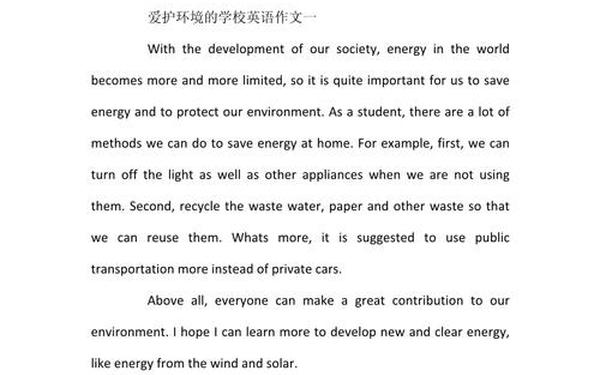Environmental Protection: Our Shared Responsibility
In the 21st century, environmental protection has become a critical global challenge. With pollution levels rising and natural resources depleting, it is imperative for individuals, communities, and governments to collaborate in safeguarding our planet. This essay explores the causes of environmental degradation, its impacts, and actionable solutions to ensure a sustainable future.
Causes of Environmental Problems
1. Human Activities: Industrialization and urbanization have led to excessive exploitation of natural resources. Factories emit toxic gases and discharge untreated wastewater into rivers, while deforestation for agriculture or logging destroys ecosystems .
2. Lifestyle Choices: The reliance on single-use plastics, fossil fuel-powered vehicles, and energy-intensive appliances contributes to pollution and carbon emissions . For instance, improper disposal of plastic waste clogs oceans and harms marine life .
Impacts of Environmental Degradation
1. Health Risks: Air pollution causes respiratory diseases, while contaminated water sources lead to illnesses such as cholera. The World Health Organization estimates that 9 out of 10 people breathe polluted air daily .
2. Ecological Imbalance: Deforestation and habitat destruction threaten biodiversity. The extinction of species disrupts food chains, affecting entire ecosystems .
3. Economic Losses: Environmental damage reduces agricultural productivity and increases healthcare costs. For example, soil degradation lowers crop yields, impacting livelihoods .
Solutions for a Greener Future
1. Individual Actions:
2. Government Policies:
3. Community Efforts:
Conclusion
Protecting the environment is not a choice but a necessity for survival. As the saying goes, “To protect water is to protect life” . By integrating eco-friendly practices into daily life, supporting green policies, and fostering collective responsibility, we can mitigate environmental damage and create a healthier planet for future generations. Let us act now—every small effort counts!

References: Concepts and examples derived from .
结构解析与亮点
1. 逻辑框架:遵循“问题—影响—解决方案”结构,层次分明。
2. 词汇升级:使用专业术语如 low-carbon lifestyle, renewable energy, 和 biodiversity 提升学术性 。
3. 数据与引用:引用权威机构(如 WHO)的数据增强说服力 。
4. 呼吁行动:结尾强调个人与集体的责任,呼应主题 。
此范文适合用于考试或演讲,兼具实用性与深度。如需扩展,可添加具体案例(如某国成功治理污染的实例)或深入探讨气候变化议题。

